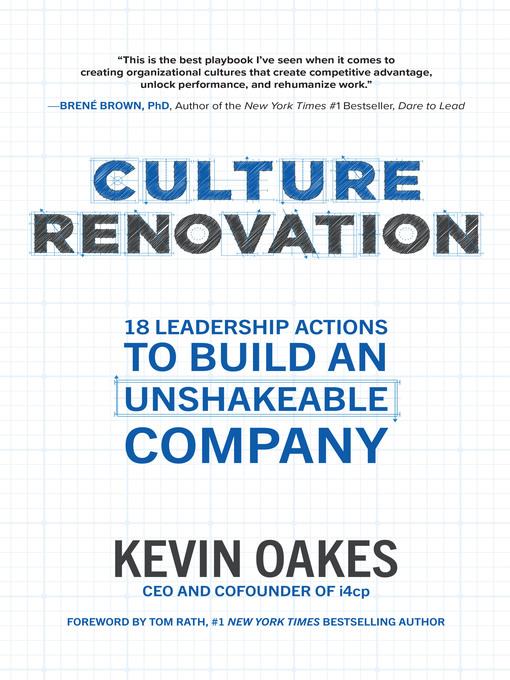
Culture Renovation
- اطلاعات
- نقد و بررسی
- دیدگاه کاربران
نقد و بررسی

December 1, 2020
Today, only 15 percent of companies are successful in changing their culture. Author, speaker, and CEO Oakes, co-founder of the Institute for Corporate Productivity, delivers this 18-step blueprint for initiating and maintaining a culture revolution. Through research and case studies with companies like 3M, Microsoft, and T-Mobile, Oakes approaches his plan in three phases: plan, build, and maintain. He focuses on tangible ideas like the importance of diversity: you cannot be innovative when you surround yourself with people who look, act, and talk like you. Oakes offers challenges like setting up a cross-functional and diverse "kill the company" committee that brainstorms ways to disrupt the current company so it will be better prepared for the future. He also touches on culture amid a pandemic and how businesses can continue to change or hone their corporate culture with the rapid move to remote working. General employees will find this an interesting, quick read and will glean a top-down perspective of corporate culture. Those in leadership positions can use this as a blueprint for making impactful changes in their organization.
COPYRIGHT(2020) Booklist, ALL RIGHTS RESERVED.

January 11, 2021
Oakes, the CEO of an HR research firm, stresses the importance of a healthy work culture in his empowering debut. He lays out an 18-step “culture change blueprint” for companies to transform their workplace and in so doing cultivate “an engaged workforce, better execution, resiliency in the face of challenges, and more loyal customers.” Oakes sorts his lessons into three categories: the “plan” phase includes listening to employees no matter how difficult it might be; identifying influencers, energizers, and blockers among staff; and determining how progress will be measured, monitored, and reported. The “build” phase offers advice on communicating clearly about impending change, weeding out naysayers, and providing training on the desired behaviors. The “maintain” phase ensures that employee onboarding is about relationships, not red tape, and being “aware of what is being said about their employer brand externally.” Oakes also advises on the importance of having a company purpose statement and gives guidelines to consider when forming one, such as that it should be applicable to small and large initiatives and evoke emotions. Along the way, Oakes successfully presents countless case studies that clarify his advice (such as Yankee Candle’s “company story” and WD-40’s brand purpose). Business leaders will want to check out this smart, savvy guide.




دیدگاه کاربران